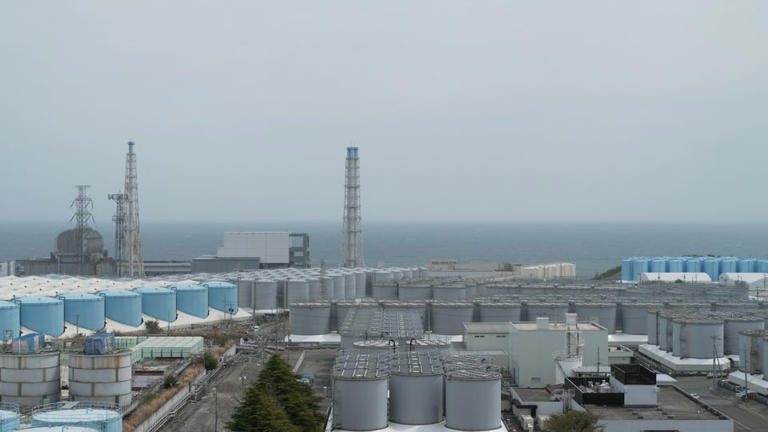JASPER NATIONAL PARK TOWNSHIP
Pride means more now than everStory by The Canadian Press •
A crowd of approximately 100 people, young and old, watched as the Progress Pride flag was raised at the Jasper Emergency Services Building last Friday afternoon.
The moment marked the start of the town’s 14th annual Jasper Pride and Ski Festival, one of Canada's longest running Pride festivals, and the first in Canada to be held in a national park.
“I am impressed by the turnout because your presence confirms that council’s proclamation of Jasper as a welcoming and inclusive community simply reflects the underlying attitude of support and commitment that prevails through all our residents and throughout the community,” said Mayor Richard Ireland.
Continuing through until April 23, the festival boasts more than 35 events with something for everybody, according to Jasper Pride board member Joost Tijssen. It’s a more diverse selection of festivities than ever before, fellow Jasper Pride board member Lynn Wannop added during her welcoming remarks.
The comment evoked the concepts of “diversity” and “celebration” that are so intrinsic to Pride in Jasper and beyond.
“We're so fortunate to be part of such a supportive community, always welcome to be free to be themselves no matter where you're from or who you love,” she said.
The flag is certainly a powerful symbol, and it comes with the rainbow banners that line the median of Connaught Drive, reminding residents and visitors of Jasper’s inclusivity and good cheer. Those emblems, reinforced by the many businesses with themed window paintings and the many people who put on their rainbow lapel buttons, show that the community rallies whole-heartedly behind Pride.
What does all this mean to those who are the most involved in the local LGBTQ2S+ community? The Fitzhugh asked several people that question. Here are their answers.
“For me personally, it means that it's a safe place to go to, that you feel welcomed, you feel accepted. Places that do celebrate Pride are, for me, a safe place to go to,” Tijssen said.
With so many international visitors, he added, this is especially important.
“It is so important to know that if you're traveling, you’re going to a place where you do feel comfortable, where you won't face discrimination, where you can just be who you are.”
Lynn Wannop said that this is why living here is really important to her. She wanted to be somewhere safe and inclusive where she could raise children.
“I wanted them to be raised somewhere that didn't matter who you are, where you're from, who you love... it's okay to be who you want to be. I've lived my life like that for a long time so it seemed like an obvious thing,” she said, adding that seeing how Jasper has stood with Pride has meant the world to her.
“Pride here really represents strength in the community. I think it really shows how strong the community is to accept everybody who comes and lives here and visits here,” said Plastika, who was one of the first youths to come when they were still in high school.
All of those flags and other rainbow symbols demonstrate that strength and solidarity.
“We're here for everybody here. We're one big community.”
The importance of that cannot be understated, said Pieter van Loon.
“This is our home. It's a very small town, but it's such a big statement. It's a big thing that we can celebrate Pride here in a small mountain town, and that everyone can feel home. That's why when we moved here, we felt that immediately. Everyone is so welcoming,” he said.
“It's a celebration of the person you are and the friends and family that support you. It's a time to acknowledge the progress that has been made, as well as the work that is still to be done,” said Sean Thompson, president of the Fruit Loop Society of Alberta.
Anna DeClercq, who was a teacher at Jasper High School and helped run the Gay-Straight Alliance that Plastika started several years ago, said that this town’s welcoming nature has played a huge part in raising teens properly, especially since adolescence is already such a tumultuous time for everybody.
“There’s a lot of discovery at that age. It's so, so, so important that LGBTQ youth in our community have a visual of adults who are successful and who are thriving in life and are supported and welcomed in our community as LGBTQ members. I feel like Pride just brings that visual. It's a community. There’s support. They're cared for. There’s success. You will have a successful life full of love whatever sexuality you are, or whatever gender you identify with. I feel like that is so important to our kids to see,” she said.
Unconditional acceptance is one of the healthiest ways to show love to your family, friends and neighbours, said Kelly Dawson, captain of training and fire prevention with the Jasper Fire Department.
“I am blown away every single year by this town and its love and acceptance,” she began.
“Pride reminds me to celebrate being myself. I am so grateful to live in a town where I can comfortably hold my partner’s hand while walking down the street. To see all community members in Jasper come together and support Jasper Pride is a pretty heart-warming feeling. At the end of Jasper Pride, I feel such a strong sense of family within the community.”
Scott Hayes, Local Journalism Initiative Reporter, Jasper Fitzhugh
A crowd of approximately 100 people, young and old, watched as the Progress Pride flag was raised at the Jasper Emergency Services Building last Friday afternoon.
The moment marked the start of the town’s 14th annual Jasper Pride and Ski Festival, one of Canada's longest running Pride festivals, and the first in Canada to be held in a national park.
“I am impressed by the turnout because your presence confirms that council’s proclamation of Jasper as a welcoming and inclusive community simply reflects the underlying attitude of support and commitment that prevails through all our residents and throughout the community,” said Mayor Richard Ireland.
Continuing through until April 23, the festival boasts more than 35 events with something for everybody, according to Jasper Pride board member Joost Tijssen. It’s a more diverse selection of festivities than ever before, fellow Jasper Pride board member Lynn Wannop added during her welcoming remarks.
The comment evoked the concepts of “diversity” and “celebration” that are so intrinsic to Pride in Jasper and beyond.
“We're so fortunate to be part of such a supportive community, always welcome to be free to be themselves no matter where you're from or who you love,” she said.
The flag is certainly a powerful symbol, and it comes with the rainbow banners that line the median of Connaught Drive, reminding residents and visitors of Jasper’s inclusivity and good cheer. Those emblems, reinforced by the many businesses with themed window paintings and the many people who put on their rainbow lapel buttons, show that the community rallies whole-heartedly behind Pride.
What does all this mean to those who are the most involved in the local LGBTQ2S+ community? The Fitzhugh asked several people that question. Here are their answers.
“For me personally, it means that it's a safe place to go to, that you feel welcomed, you feel accepted. Places that do celebrate Pride are, for me, a safe place to go to,” Tijssen said.
With so many international visitors, he added, this is especially important.
“It is so important to know that if you're traveling, you’re going to a place where you do feel comfortable, where you won't face discrimination, where you can just be who you are.”
Lynn Wannop said that this is why living here is really important to her. She wanted to be somewhere safe and inclusive where she could raise children.
“I wanted them to be raised somewhere that didn't matter who you are, where you're from, who you love... it's okay to be who you want to be. I've lived my life like that for a long time so it seemed like an obvious thing,” she said, adding that seeing how Jasper has stood with Pride has meant the world to her.
“Pride here really represents strength in the community. I think it really shows how strong the community is to accept everybody who comes and lives here and visits here,” said Plastika, who was one of the first youths to come when they were still in high school.
All of those flags and other rainbow symbols demonstrate that strength and solidarity.
“We're here for everybody here. We're one big community.”
The importance of that cannot be understated, said Pieter van Loon.
“This is our home. It's a very small town, but it's such a big statement. It's a big thing that we can celebrate Pride here in a small mountain town, and that everyone can feel home. That's why when we moved here, we felt that immediately. Everyone is so welcoming,” he said.
“It's a celebration of the person you are and the friends and family that support you. It's a time to acknowledge the progress that has been made, as well as the work that is still to be done,” said Sean Thompson, president of the Fruit Loop Society of Alberta.
Anna DeClercq, who was a teacher at Jasper High School and helped run the Gay-Straight Alliance that Plastika started several years ago, said that this town’s welcoming nature has played a huge part in raising teens properly, especially since adolescence is already such a tumultuous time for everybody.
“There’s a lot of discovery at that age. It's so, so, so important that LGBTQ youth in our community have a visual of adults who are successful and who are thriving in life and are supported and welcomed in our community as LGBTQ members. I feel like Pride just brings that visual. It's a community. There’s support. They're cared for. There’s success. You will have a successful life full of love whatever sexuality you are, or whatever gender you identify with. I feel like that is so important to our kids to see,” she said.
Unconditional acceptance is one of the healthiest ways to show love to your family, friends and neighbours, said Kelly Dawson, captain of training and fire prevention with the Jasper Fire Department.
“I am blown away every single year by this town and its love and acceptance,” she began.
“Pride reminds me to celebrate being myself. I am so grateful to live in a town where I can comfortably hold my partner’s hand while walking down the street. To see all community members in Jasper come together and support Jasper Pride is a pretty heart-warming feeling. At the end of Jasper Pride, I feel such a strong sense of family within the community.”
Scott Hayes, Local Journalism Initiative Reporter, Jasper Fitzhugh




























